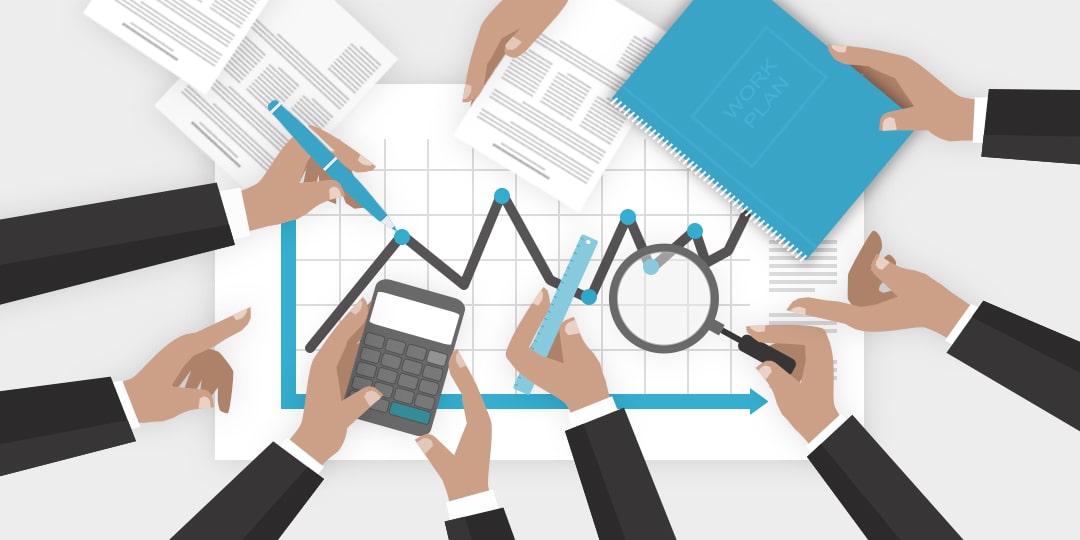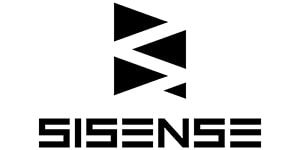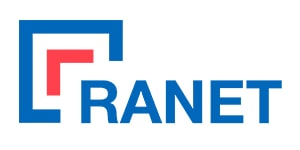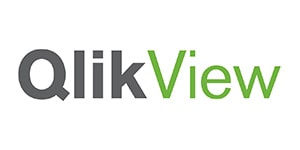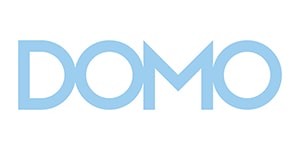
Occupational burnout, the syndrome that can cause every of you. It would seem that what can hurt you in the office? However, constant stress, monotonous tasks, overwork and deadlines can easily stymie us. What is the solution here, how to escape being caught in this trap?
Delegate. The key to success is automated team work and proper division of responsibilities. Especially today, when so many duties can be done by the program. And reporting is one of them. So follow the article and find out what reporting tools will help you in it.
What is reporting tool?
Reporting software connects to data sources, gathers information and provides insights in the form of graphs and charts based on input data so that the user can find useful information. Using reporting tool you can:
- make your work with multidimensional data easier,
- make trends and data dependencies visible,
- produce quick but informed business decisions,
- present data in the form of professional pivot tables
Tools for reporting usually vary regarding complexity and specificity of particular industry. However, the core function is the same: extend the ability to create any data reports quickly and easily.
Features
Reporting tools features may vary as well regarding the goal of use. However, a quality software solves the following issues:
- It is quite flexible and customizable.
- Doesn’t require a complete change in the entire document management system.
- It does not require financial costs and hiring additional employees for the sake of bureaucracy.
Thus, the most important features to provide comfortable work are:
| Attractive data visualization | The right reporting tool provides different data visualization options: various types of charts. graphs and diagrams. So every user can choose the most convenient and graphic way for him. |
| Ad-hoc reports | Such reports are created on the fly and display information in the form of a table or diagram, which is the result of a question that has not yet been codified in the production report. In other words, ad-hoc reporting allows users to modify reports exactly in the form the want. |
| Dashboards | A good tool for visualizing and analyzing information about business processes and their effectiveness. The data displayed on the indicator panel is usually presented as key performance indicators. |
| Collaboration | What is the key of any coordinated effective work? There are actually two words: sharing and collaboration. So it is relevant for reporting tool to provide possibility of reports exchange not only through different teams but various kinds of analytics platform as well. |
| Interactivity | It is important for users to have possibility to analyze data with the complexity and methods they need. Filters and other tools help to control the level of report complexity and the volume of required data. |
What do I get from it?
Choosing a tool, we expect to get particular benefits from it, of course. Especially, when we are talking about reporting tools for data management, which in general are not so cheap. So what advantages best reporting tools will give you? There are 5 must ones:
- Presentation: new convenient design for creating neat and beautiful reports
- Productivity: easy report data management. The tool allows users spend less time for report making with any complexity and interactivity level.
- Customization: you can use custom queries as a data source, data communication is carried out using drag'n'drop
- Uniqueness: a wide set of controls helps you to create a unique report useful and understandable for your team.
- Progress: advanced features for creating complex reports: related, with tags, with data grouping.
Top 5 reporting tools
Now is the time to ask a question: which reporting tool is best in market? Because choosing a new data reporting software we don’t need money wasting, all we want is the best reporting software for great cost.
We understand you well and want to ease this challenge by providing you with a list of top reporting tools. So follow them and choose the best for you:
Sisense
The most popular and high rated product on the market. Sisense is a business intelligence class solution that simplifies the analysis of complex data by offering an end-to-end solution for combining and visualizing Big Data and arbitrary disparate data arrays.
Sisense supports the full BI cycle, from data collection and preparation to comprehensive analysis and visualization with extensive functional development and management.
Key components:
- Elasticube Manager: a convenient environment for importing, structuring, and preparing data for analysis.
- Sisense Web: browser environment for creating, viewing, managing and collaborating with dashboards.
- Server Console: application for managing system resources and Elasticube cubes (Sisense proprietary databases).
- Third-Party Data Access: Open Source Components for Sisense Access and Management
Ranet OLAP
Ranet OLAP is one of these BI tools that can be implemented in your business and make its work even better. It is a ready-to-use solution for business data analysis. Ranet OLAP provides components for reporting, forecasting and analyzing the data from different perspectives.
These OLAP tools provide end-users with wide options for ad-hoc data analysis and reporting. To make an ad-hoc report you just need to drag-and-drop elements from OLAP Cube Browser to the Selection Panel, which forms the structure of the soon-to-be pivot table. Ranet OLAP empowers end-users to ask their own business questions and analyze data without burdening the IT specialists. You can create interactive OLAP reports on the fly, export and save them, share them with other users.
You also can try it for free as Ranet OLAP offers demo and free 30-day trial.
QlickView
QlikView is a Business Discovery self-service business intelligence platform for all corporate business users. Using it, you can analyze data and use the results to support solutions. QlikView program gives you the opportunity to ask yourself questions and answer them, to independently follow the path of knowledge. The platform allows you and your colleagues to make decisions in collaboration.
QlikView provides associative work with all the data needed for analysis, regardless of their location. The user can choose any place to start work and any direction; The program lacks pre-configured drill-down paths and dashboards.
Board
3 in 1 BI system: combines business intelligence, corporate performance management, and business analytics. A great solution for middle-size and large companies.
BOARD allows users to retrieve data from virtually any source, as well as generate reports for self-service. If necessary, reports can be exported in several different formats, such as
- CSV,
- HTML and others.
The system also has extensive multilingual capabilities, which makes it ideal for companies that need to provide reports in another language.
The dashboard application in BOARD allows users to create fully customizable features with drill and drill features, as well as several different types of data visualization. Data collection and analysis functions allow companies view data appropriately, which helps them make smart business solutions.
DOMO
Thank you – say DOMO developers to you, as it is a direct translation from Japanese. Domo is a business management cloud package that integrates with multiple data sources, including:
- spreadsheets,
- databases,
- social networks, and any existing cloud or on-premises software solution.
It is suitable for companies of any size, from small to large, compatible with Windows or Mac platforms, iPad tablets, and also works on mobile devices.
The solution provides both micro and macro level visibility and analysis; from cash balances and best-selling product lines to projected revenue by region, marketing return on investment (ROI) through channels, and much more.
FAQ
And of course we just cannot left you without all your questions answering. As usual, we gathered top asked questions about reporting tools and want to share answers with you. Let’s sum it up together:
Why do we need a reporting tool?
The right question before purchasing such solutions. But the are some relevant reasons for that:
- make your work with multidimensional data easier,
- make trends and data dependencies visible,
- produce quick but informed business decisions,
- present data in the form of professional pivot tables
In general, the core reporting tool goal is the same: to extend the ability to create any data reports quickly and easily.
What does a good reporting tool include?
Of course, the full number of features vary from one tool to another, from small company needs to big corporation requirements. However, here is the basic must have features set:
- Attractive data visualization: provides different data visualization options: various types of charts. graphs and diagrams;
- Ad-hoc reports: allow users to modify reports exactly in the form the want;
- Dashboards: the data displayed on the indicator panel is usually presented as key performance indicators;
- Collaboration: provides possibility of reports exchange not only through different teams but various kinds of analytics platform as well;
- Interactivity: filters and other tools help to control the level of report complexity and the volume of required data.
Which benefits do I get using a reporting tool?
A good tool will definitely bring your business:
- Presentation: new convenient design for creating neat and beautiful reports
- Productivity: easy report data management. The tool allows users spend less time for report making with any complexity and interactivity level.
- Customization: you can use custom queries as a data source, data communication is carried out using drag'n'drop
- Uniqueness: a wide set of controls helps you to create a unique report useful and understandable for your team.
- Progress: advanced features for creating complex reports: related, with tags, with data grouping.
What are the best reporting tools?
There are dozens tools on the market today, and of course, we understand you want to get the best one. Look at those 5:
- Sisense
- Ranet OLAP
- QlickView
- Board
- DOMO
And don’t forget you can always try Ranet OLAP for free.

